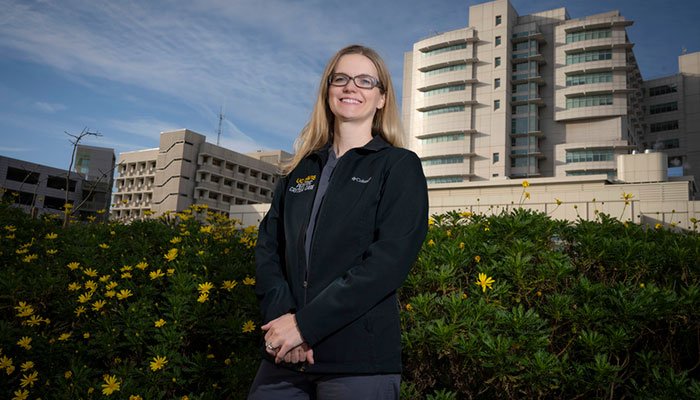New Startups Built From UC Davis Innovations Drive Solutions in Food, Health and Agriculture
During the 2021-22 fiscal year, 13 startup companies executed agreements to access foundational intellectual property and commercialize new technologies developed at the University of California, Davis.
“The bold pursuit of novel solutions through research at UC Davis often results in new technologies and services aligned with a commercial pathway for impact,” said Prasant Mohapatra, vice chancellor for research at UC Davis. “In most cases those innovations are licensed to existing companies, but many also become the foundation for emerging startups. We are thrilled to see the success of this pathway continue at UC Davis.”
The process for connecting innovations from the university to commercial impact is managed by the Innovation and Technology Commercialization division, which is part of the Office of Research. During the 2021-2022 fiscal year, the division processed 132 new records of invention and executed 48 license agreements.
The division’s Venture Catalyst unit focuses on advancing potential technologies with proof-of-concept funding and facilitating startup formation.
The University of California system of campuses ranks first in the world for the number of U.S. utility patents according to a recent report from the National Academy of Inventors and the Intellectual Property Owners Association.
“Venture Catalyst, which was launched in 2013, provides resources to help campus innovators advance technologies and launch new companies,” said Janine Elliott, interim director Venture Catalyst. “It is exciting to see the results of these efforts and the broad range of solutions being advanced.”
Meeting needs in food, health and ag
In the last 10 years Venture Catalyst assisted 130 startups with foundational intellectual property. The 13 emerging startups over the past year are focused on developing technology to meet needs in food, health and agriculture.
One of the startups, Eunicera is developing novel therapeutics to treat and cure advanced drug-resistant prostate cancer. Co-founded by Allen Gao, a professor in the Department of Urology, the company’s proprietary, orally bioavailable small molecules targeting both AKR1C3 and androgen receptor variants either work alone or in combination with current therapies to overcome and prevent treatment resistance.
Another company, Optimized Foods is propelled by innovations in the food technology and cultivated meat sectors. By using a novel approach in mycelium technology, the team is creating nutritious, sustainable foods, starting with cultured caviar. Minami Ogawa, a graduate student in the Department of Food Science, discovered how the innovation could be harnessed as an ideal proprietary scaffold for cell cultivation. In parallel, Ruihong Zhang, a professor in the Department of Biological and Agricultural Engineering, and her lab had been developing foundational elements of the platform for food applications. The company’s platform is focused on making the dream of cultivated meat a reality, and improving human, animal and planetary health.
Peak B is commercializing natural alternatives to synthetic food colorants with superior color qualities, stability and potency. The UC Davis-led startup has discovered a cyan blue color, solving one of the biggest challenges in the food industry’s search to source natural food colorants. The researchers examined anthocyanin, a water-soluble pigment that’s found in many familiar fruits and vegetables, giving them their vibrant red, purple, pink and blue hues. A specific anthocyanin was discovered in red cabbage that displayed the desired blue properties. Since the amount of anthocyanin is small in red cabbage, they used an enzyme-based process to turn its other anthocyanins into blue. Co-founded by Justin Siegel, an associate professor in chemistry, biochemistry and molecular medicine, the company’s patented enzyme-based process now turns extracts from natural sources into blue and green colorants that can be used in a variety of food applications.
Additional companies that executed agreements to access the foundational intellectual property from UC Davis during the 2021-22 fiscal year are highlighted below. Three companies have chosen to remain in “stealth mode” for competitive reasons and are not listed.
- AIVision aims to reduce toxic chemical use and food loss through early insect detection. The company is co-founded by Zhongli Pan, an adjunct professor in the Department of Biological and Agricultural Engineering.
- Artisyn Laboratories is developing sustainable wellness products for the commercial market. The company is co-founded by Mark Mascal, a professor in the Department of Chemistry.
- Hope Medical is focused on developing a medical device that helps patients with difficulties swallowing. The company is co-founded by Peter Belafsky, a professor in the Department of Otolaryngology.
- Kobin is developing precision agriculture utilizing aerial data analytics. The company is co-founded by Alireza Pourreza, an assistant professor in the Department of Biological and Agricultural Engineering.
- Mirnova Therapeutics is developing small molecules and microRNA drugs for the treatment of traumatic brain injury and other neurological disorders. The company is co-founded by Da Zhi Liu, an adjunct professor in the Department of Neurology.
- Prism Bio is pioneering the use of biotechnology to produce natural protein-pigment based colors based on natural light-sensing pigment systems from plants and algae to deliver all colors in the visible spectrum. These sustainable natural colors can be used in food, industrial and personal care products, and health applications. Their technology will have a significant impact on reducing greenhouse gas emissions. Co-founders include John Clark Lagarias, a distinguished professor emeritus in the College of Biological Sciences, and Justin Siegel, an associate professor in the Department of Chemistry.
- VGN Bio Inc. is developing unique cancer drug candidates from viral protein sequences that have evolved over millions of years of co-evolution. The company is co-founded by Yoshihiro Izumiya, an assistant professor in the Department of Dermatology.
Media Resources
Media Contacts:
- AJ Cheline, Office of Research, [email protected]
- Andy Fell, News and Media Relations, 530-304-8888, [email protected]









